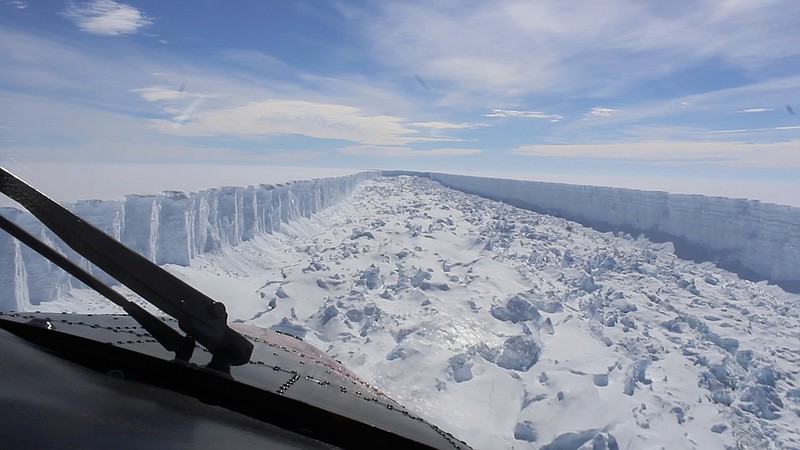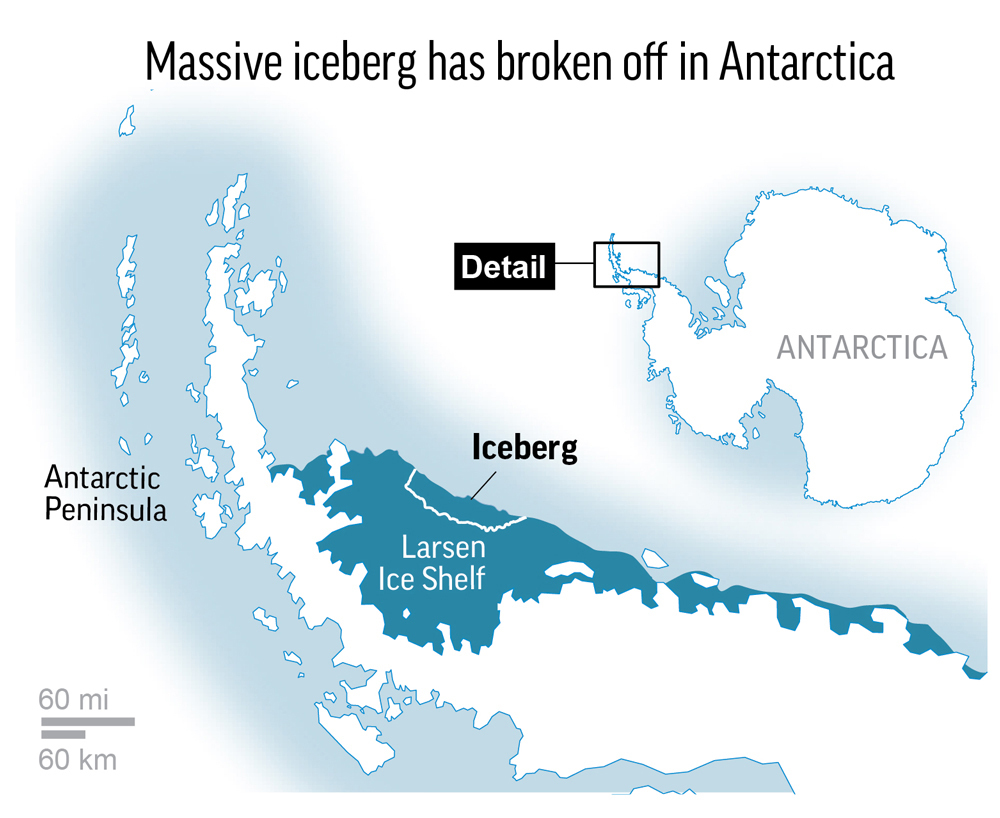A massive iceberg the size of Delaware and weighing more than one trillion tons has broken away from Antarctica and is floating in the sea, according to a UK-based research team.
So what? Delaware is a postage stamp of a state, right?
Let's put it another way, then.
A 2,300-square-mile iceberg about the size of the southeastern corner of Tennessee has broken away to float free in the ocean. It would be as if Hamilton, Marion, Sequatchie, Grundy, Bradley and Polk counties all broke free of Tennessee and their adjoining neighbor states to become an island.
In the Antarctic, this new iceberg is half the size of the largest iceberg ever recorded. The largest was about the size of Connecticut or the island of Jamaica, and it calved off Antarctica's Ross Ice Shelf in March 2000 - just about the time our earth really began to heat up.
But as NPR puts it, this is "not just another sad climate change story." It's complicated.
"A lot of things are going on deep inside the ice," Adrian Luckman, a glaciologist at Swansea University in the U.K., told NPR in January.
While scientists cannot track a direct climate change link to the ice crack that calved this iceberg, Luckman said climate change is certainly influencing the Antarctic region. Larsen C, the ice shelf where the iceberg broke off, used to have two neighbors to the north, Larsen A and Larsen B. As the air and water warmed, those ice shelves started melting and splintering in 1995 and 2002. The new crack in Larsen C that led to the newest giant iceberg, however, was a little different. First spotted in 2011, it began growing in spurts in 2014 and didn't slow as most cracks do.
Another scientist, Ala Khazendar, a geophysicist at NASA's Jet Propulsion Laboratory, told NPR that he was "cautiously worried."
He explained that ice shelves are the gates of Antarctica. They are already floating, so if they fall apart it does not immediately affect sea levels. But as gatekeepers and insulators of the ice caps, it's what they hold back that's important.
Khazendar - in January - said there are two possible scenarios for this iceberg: One, it would break off "and nothing spectacular" would happen for many years. The glaciers will bulk it up with ice until it's back to its former look. Or, two, this iceberg is just the first of many irreversible losses for Larsen C, which, in combination with enough warm summers, will be weakened and shatter like the previous Larsen shelves.
Time will tell. And in many ways, it already has.
Our planet has had 16 record-breaking hottest years since 2000. In other words, every year of the past 16 was record-breaking warm, with 2016 being the hottest yet.
Scientists already have documented a 6.7-inch rise in global sea levels over the last century, and the rate of that rise has doubled in the last decade. That might not seem like much, but ask residents of Miami, who deal now with inland flooding every time there is a full moon.
Extreme weather is more extreme. Since 1980, the U.S. alone sustained 203 weather and climate disasters with overall damage costs reaching or exceeding $1 billion (and, yes, that's costs adjusted for inflation). By the way, the cumulative costs for those 203 events exceed $1.1 trillion. Overall, the Southeast has taken the bulk of those record weather events.
Scientists also measure carbon dioxide in our atmosphere - the main catalyst of global warming and climate change. In 1950, they say it began consistently spiking and breaking records. In 2005, the measure was 378.21 parts per million. In 2013, carbon dioxide levels broke 400 ppm for the first time. In April 2017, it was 406.17 ppm.
That brings us back to our polar ice caps and the ice shelves around them.
In September 2016, Arctic sea ice reached it lowest extent ever.
Much of the perennial sea ice - that is ice that lasts longer than a year - has declined steadily since 1984.
Antarctic sea ice, for the first time, also was at record low levels.
That means the cap regions are relying on insulating ice that melts completely in the summer and refreezes in the winter, leaving the caps vulnerable to further decline.
Who knows, perhaps eventually Southeast Tennessee won't have to break off as an island in order to have oceanfront property.

